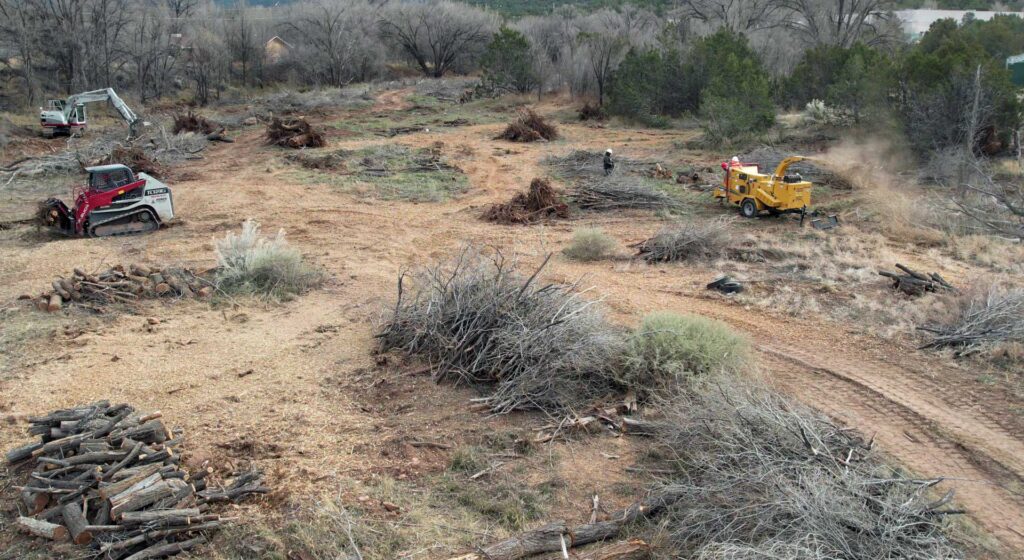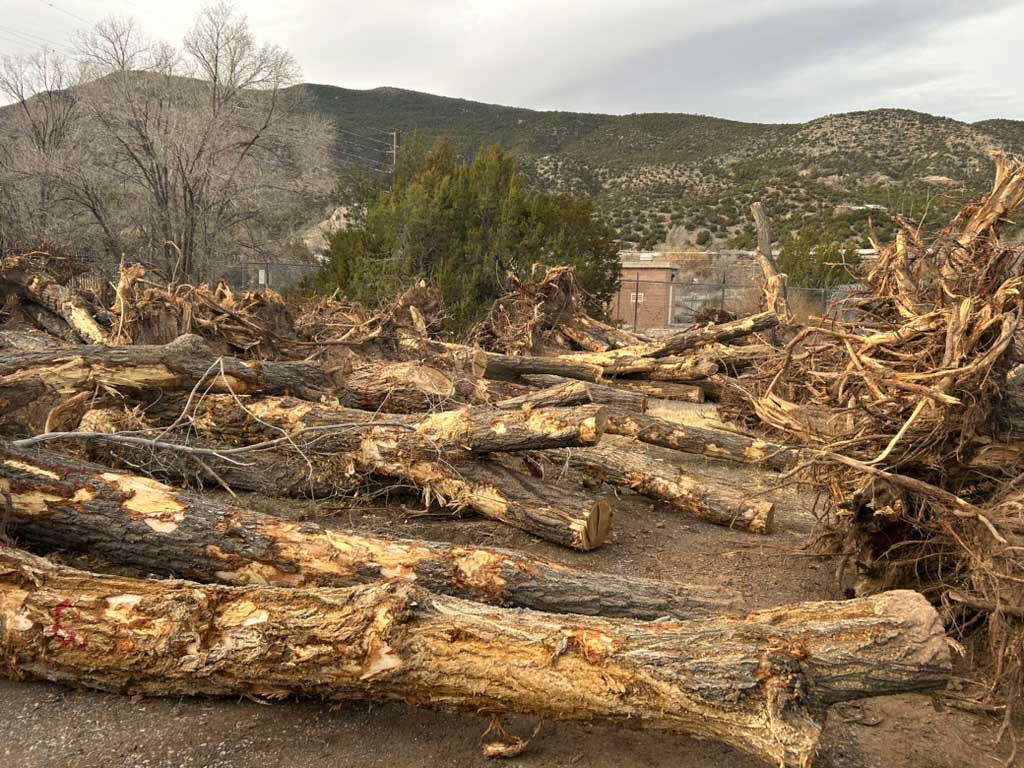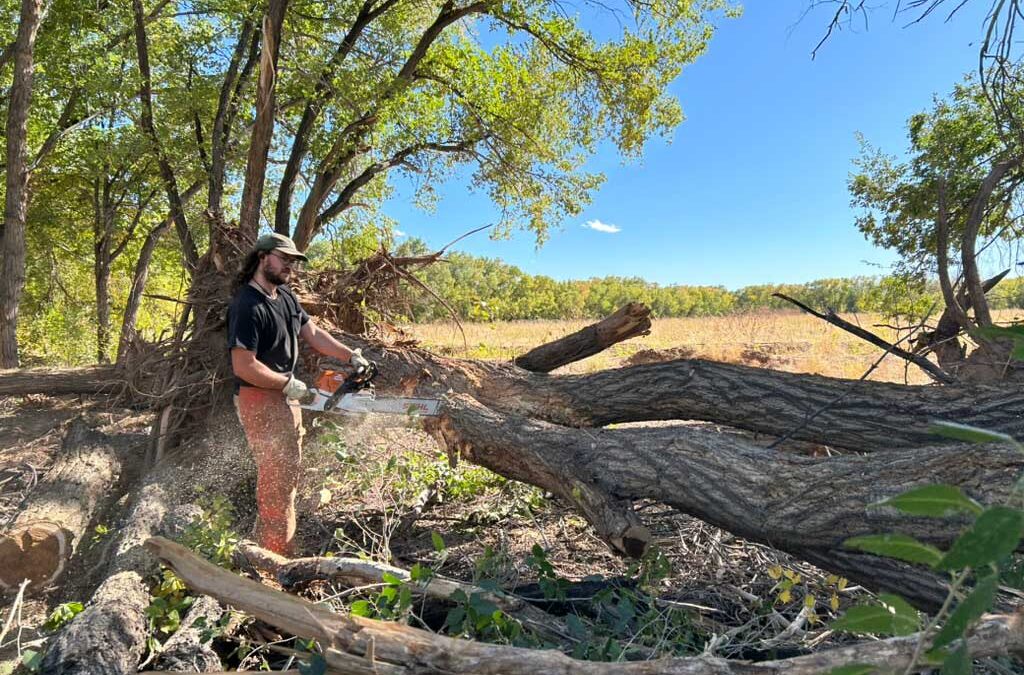Bye-Bye Invasives, Hello Habitat!
Rio Grande Return is helping to restore sections of Tijeras Creek and its floodplain. Over time, Tijeras Creek has become degraded and deeply incised, meaning its channel has eroded significantly below the surrounding landscape. This reduces natural floodplain function, depletes habitat, and weakens the creek’s ability to slow and filter stormwater. In Fall 2023 we completed baseline vegetation monitoring, which revealed a dense mix of native riparian vegetation (including Fremont and Narrowleaf cottonwoods, Goodding’s willow, and Peachleaf willow), and a significant invasion of Siberian elm (Ulmus pumila), a non-native tree species known for outcompeting native plants and reducing biodiversity.
With funding from the New Mexico Environment Department River Stewardship Program, and in partnership with Bernalillo County Natural Resource Services and Ciudad Soil & Water Conservation District, our restoration efforts include:
- Removing invasive woody species along the stream corridor
- Replanting native vegetation to reestablish natural riparian habitat.
- Restoring the streambed to reconnect the creek with its floodplain.
- Designing natural stormwater infrastructure (with Bohannan Huston Inc.) to slow, filter, and retain water using natural materials.
- Ongoing vegetation monitoring before and after restoration to track ecosystem recovery
When complete, the restored Tijeras Creek corridor will enhance stormwater management and water quality for the broader areas. It will provide improved wildlife habitat for birds, pollinators, and other native species. An ADA-accessible trail will be available for walking, recreation, and environmental education. A site for youth learning and outdoor engagement will be available right next to a local school and community center.
The Tijeras Watershed Restoration Project helps realize a vision for a healthier, more connected community through the power of nature-based solutions.


